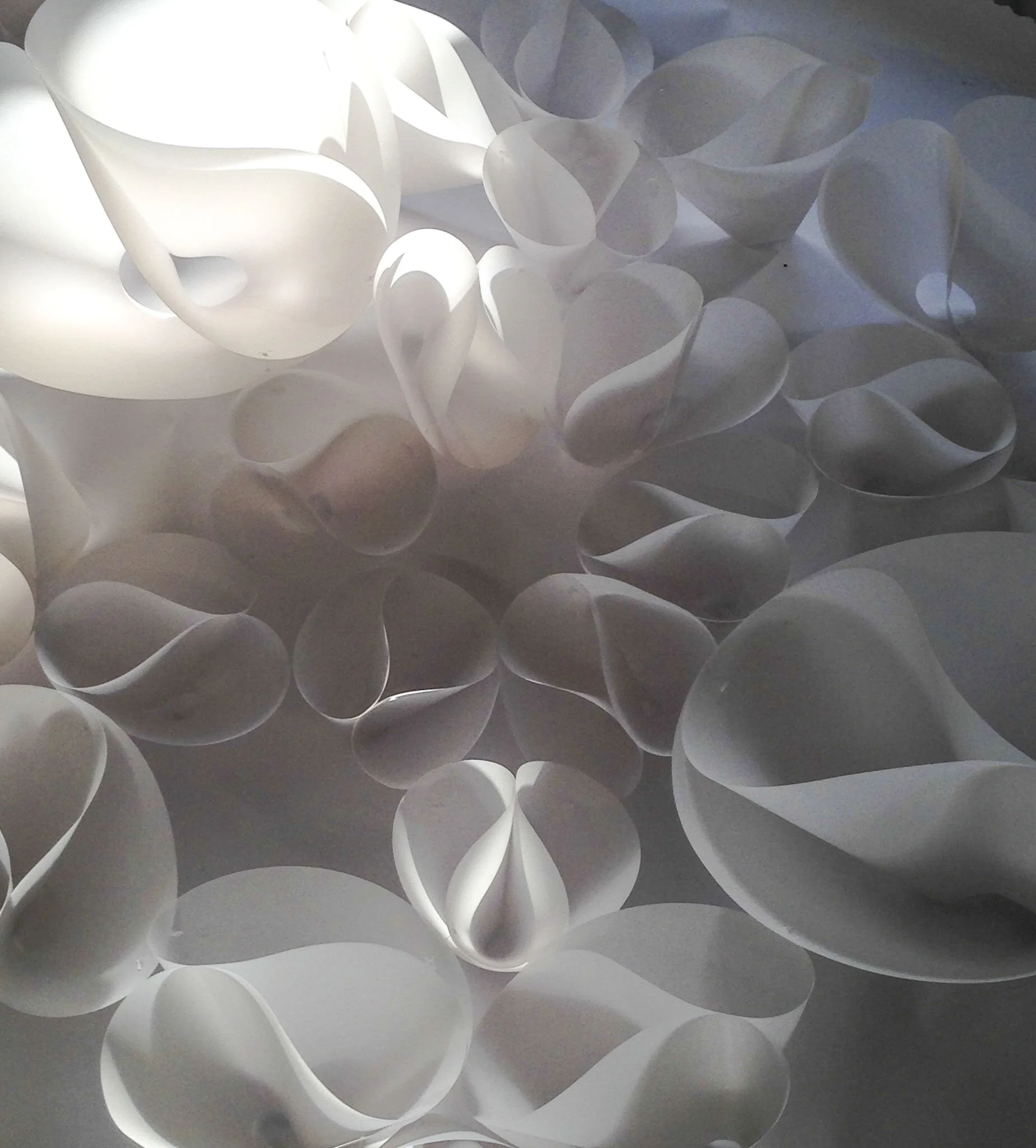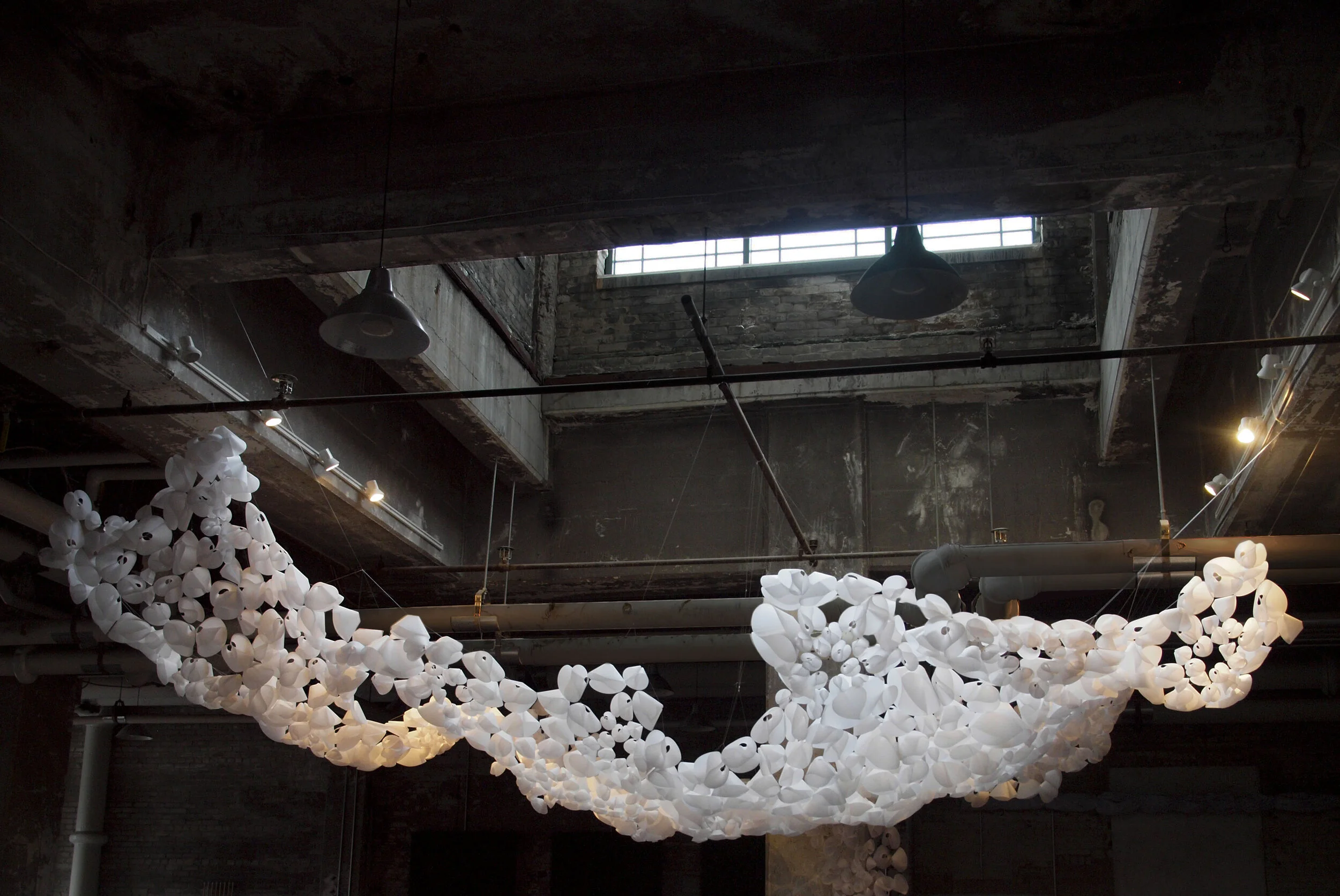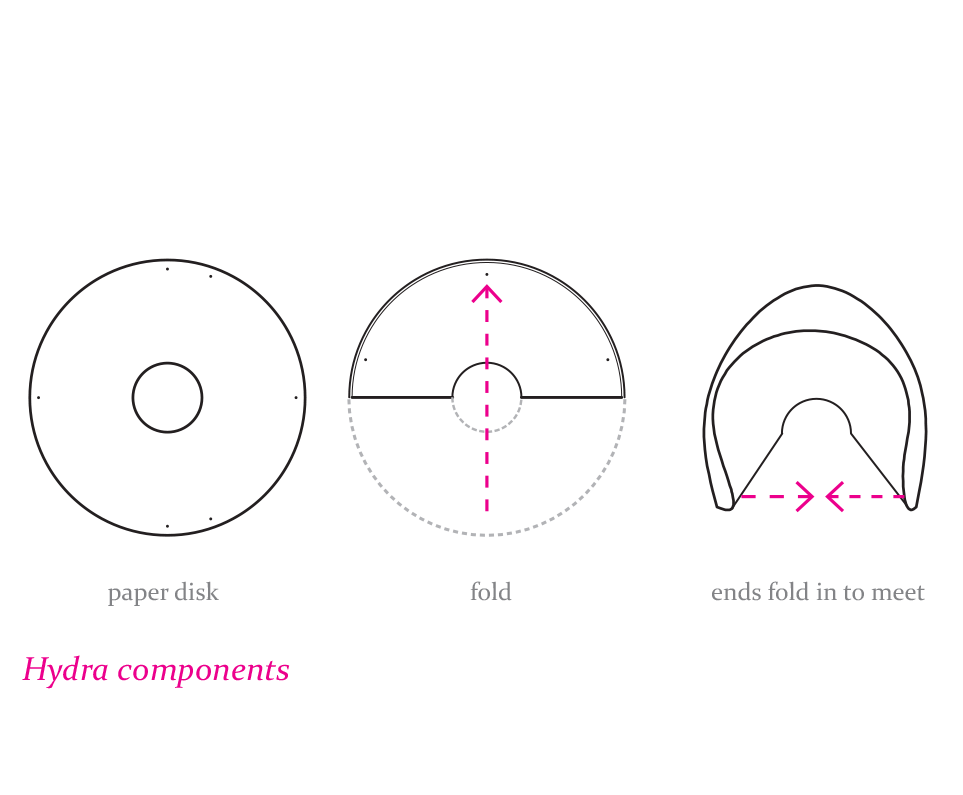












What is Hydra?
Hydra is a dynamic, mobile installation designed to float within a light-well in the tower of Fenway’s historic Landmark Center. The title of the piece, Hydra, is derived from its form, which was inspired by the radial nature of reef-dwelling organisms. A simple methodology employing the use of one basic form was used to develop the architecture. The installation’s multi-cellular membrane is composed of over 1,000, mylar disks folded into translucent orbs. The installation is 12 feet wide by 16 feet long its overall depth ranges from 4 feet to 12 feet given its position.
Hydra, completed in April of 2014, was commissioned by the Fenway Alliance in partnership with Samuels and Associates.
Much like a coral reef, which is made up of colonies of microscopic marine animals, Hydra, is composed of groups of individual cells borrowing the radial organization of reef born polyps— or hydrozoa. The benefit to this type of organization, is that it can adapt and grow in any number of ways while maintaining the integrity of one singular form. Hydra’s form is defined by a radial clustering of five core groups. Each cluster -- which can be organized in a variety of ways -- yields a 36” hexagon; an adaptable module that provides seamless growth to make a much larger colony.
The Hydra membrane contains over 1,000 folded disks in four sizes: 3”, 5”, 7” and 10”. The folded orbs have been combined into 32 groups, assembled together to make one large colony. The entire assembly weighs approximately 17 lbs. A light substructure works behind the piece to reinforce the delicate connection points within the membrane. This invisible web of 36” diameter fishing line rings, strengthens each cluster to protect the piece from the stress of tension when hanging.
The installation is equipped with a tiny micro-controller that works behind the scenes to morph the overall form revealing changes in the quality of light occurring throughout the day. The natural light transmitting through and reflecting upon the tiny orbs make them appear to glow from within. Meanwhile, a micro-controller works discretely behind the scenes to make small movements in the piece in response to changing light within the light-well.
The evolution of the form is intended to reveal the subtle changes of light quality throughout the day. When the sunlight is direct, the hard light rakes the surface revealing a sharp contrast along the little polyps. When light is indirect — later or earlier in the day — Hydra absorbs the diffuse light, revealing a soft, luminous pattern.
Lessons learned in the construction of Hydra could contribute to much larger design applications. The development of the skin alone provides examples of how to manipulate one basic form - in this case the disk - to build a complex undulating surface.
A special thanks to my Wentworth students and to everyone who helped make Hydra happen: Kelly Brilliant, Jay Lee, Zach Briggs, James Charves, Michael Epstein, Eric Eaken, Nan Zhao, Samantha Altieri